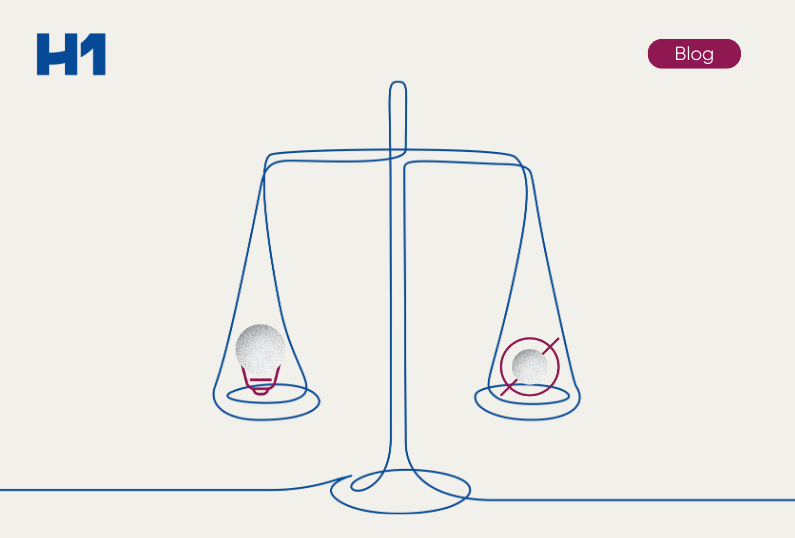The Power of Data: Three Ways to Rethink AI Hallucinations

In this new content series, H1’s Senior Director of Strategic Commercial Engagement, Robert Consalvo, writes about leveraging generative AI for business, digital health, life sciences, biotech and pharma and the best practices, potential benefits and considerations.
One of the more interesting aspects of the recent boom in Artificial intelligence (AI), in particular with generative AI, is the discovery of the concept of AI hallucinations. These manifestations of the quirks of the technology have many people discussing the quality and scope of the data used in building and training the AI models. While the concept of an AI hallucination has been around for a long time, there are certainly more people in the conversation today and as a result many people are learning about the concept for the first time. Knowing how complex of a topic this is, I think it’s helpful to share a few thoughts below.
AI “Hallucinates” Because It Is Working Properly, Just Not Always with Enough Data
AI hallucinations are the product of AI attempting to “fill in the gaps” of its knowledge by creating content to meet the needs of the prompter. Generative AI is great at knowing very complex information, but not always knowing the bounds of that knowledge. AI models thrive on vast amounts of data, as larger datasets provide a broader context for learning and allow the models to capture more nuanced patterns. When exposed to extensive datasets, AI systems can identify subtle correlations, intricate details, and complex relationships, which contribute to the generation of hallucinations that are rich in detail and complexity.
The Quality and Diversity of the Data Used During Training Play a Crucial Role in the Generation of AI Hallucinations
Scientific studies have consistently highlighted the significance of data in enabling AI systems to produce imaginative and hallucinatory outputs. By exposing AI models to a wide range of inputs, these systems can learn intricate patterns, leading to the generation of novel and imaginative content.
High-quality Data Ensures That the AI Models Are Exposed to Accurate and Representative Samples of the Target Domain
When the training data accurately reflects the real-world scenarios or desired outputs, the AI system gains a better understanding of the patterns and relationships within the data, enhancing its ability to generate coherent hallucinations.
Therefore, efforts are made to curate datasets that are free from biases, errors, and inconsistencies to ensure the models learn from reliable sources. By incorporating a wide range of inputs, including various styles, genres, or perspectives, the models are exposed to a rich spectrum of information. This diversity encourages the exploration of different possibilities and enables the generation of imaginative content that goes beyond what the models have been explicitly trained on. Scientific studies have shown that incorporating diverse data leads to enhanced creativity and the ability to produce more compelling and surprising hallucinations.
So what does all this mean?
To me, it is a sign that increasing the volume and quality of the data used to train AI will not only result in fewer erroneous fabrications, but may unlock some greater depths of creativity. Though it may feel as if we have already built “AI” the reality is that we are still so early in the development of this technology that we are only beginning to understand the way we will need to reimagine the world. As we do, we will be helped by the external imagination of hallucinating AI and with any luck be able to think of those hallucinations the same way we think of our fondest day dreams.
Look for more content in our upcoming AI Content Hub. To learn more about how Medical Affairs teams can leverage AI for smarter drug development, download our Custom White Paper with First Word Pharma: How AI Can Save Medical Affairs from Drowning in Data.
